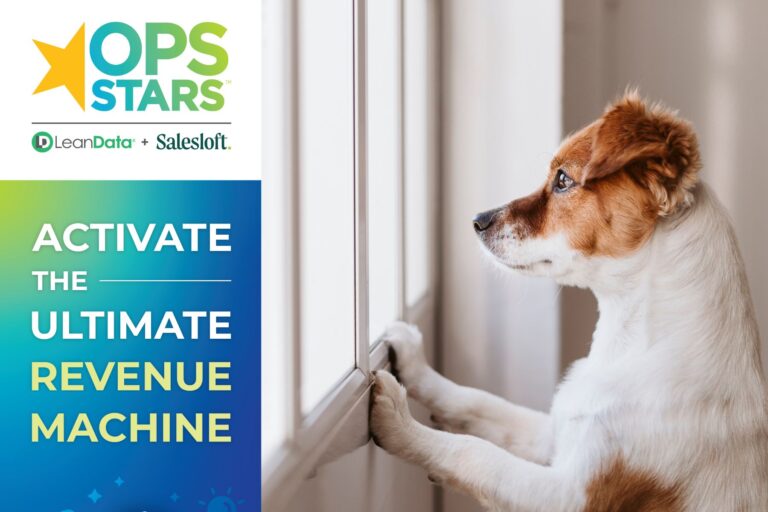Where other than Dreamforce can you find adults toting plushies, a Snoop Dogg impersonator, the Foo Fighters, and 2,500 ops professionals, all in a two-block radius?
Two powerhouse conferences dominated San Francisco’s financial district last week: Dreamforce, and its little brother at the Mint, OpsStars.
With the fantastic flood of information shared by so many brilliant minds, it’s impossible to absorb it all in just a few days. But given a choice between streaming Dreamforce and binge-watching Netflix, we all know who’s going to win that contest.
So get yourself up to speed by scanning our top five takeaways from these two inspiring events.

#1 Dreamforce Introduces Einstein 1 & the Einstein Trust Layer
“If AI is the wild west, who’s the sheriff ‘round here?”
Matthew McConaughey’s unmistakable Texas drawl in the 2023 Dreamforce Keynote intro highlighted the number one concern people have with AI: trust.
In the keynote, Salesforce CEO Mark Benioff described the “AI Trust Gap,” common concerns people have over data collection, receiving inaccurate answers (aka hallucinations), and AI’s built-in biases that foster toxicity.
Salesforce leaned heavily into the trust theme because the biggest product announcement of Dreamforce was Einstein 1. This new AI tool is integrated into all Salesforce applications: Sales, Service, Marketing, Commerce, Analytics and Platform. With Einstein 1, Salesforce users can now use and be supported by generative AI — for a price beginning at $360,000 annually.
To calm consumer fears, Salesforce created the Einstein Trust Layer. This feature is designed to prevent Salesforce’s sharing models from retaining sensitive customer data. The Einstein Trust Layer contains a large language model (LLM) gateway so when their AI takes in data, Salesforce will check the data on its way back, before it sends a response out.
Parker Harris, Salesforce Co-Founder and CTO, said, “[We’re] not going to suck your enterprise data up and train on it and get smarter with your data. No. Our secure gateway is going to protect it.”
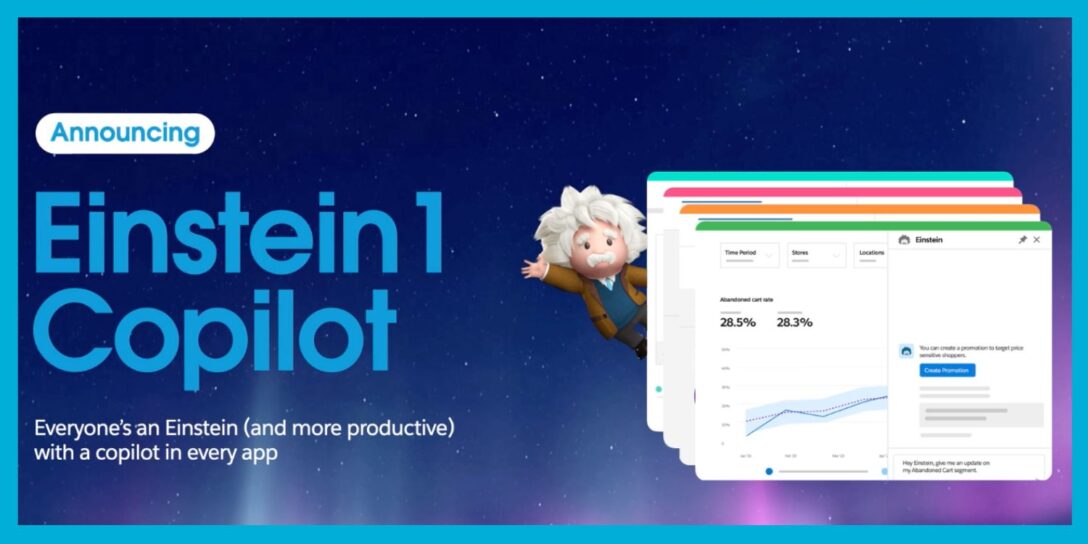
#2 Productivity Gains with the Einstein Copilot
With the Dreamforce announcement of Einstein 1, Salesforce created a new conversational interface known as Einstein Copilot. Within each application, users can ask Salesforce questions using natural language typed into a prompt.
For example, in Copilot for Sales, reps can ask Einstein to summarize years of engagement data into a few short paragraphs they can review before they start a call with a prospect. During the call, Einstein will transcribe the conversation and create notes to put in the contact record. Then, Einstein will suggest next steps.
Comparable productivity gains are predicted for Salesforce Einstein 1 platforms for Service, Marketing, and Commerce. Plus, if the Copilot does not know the answer to a prompt, Salesforce users have the option to change, configure and create answers to custom prompts through Copilot Studio.
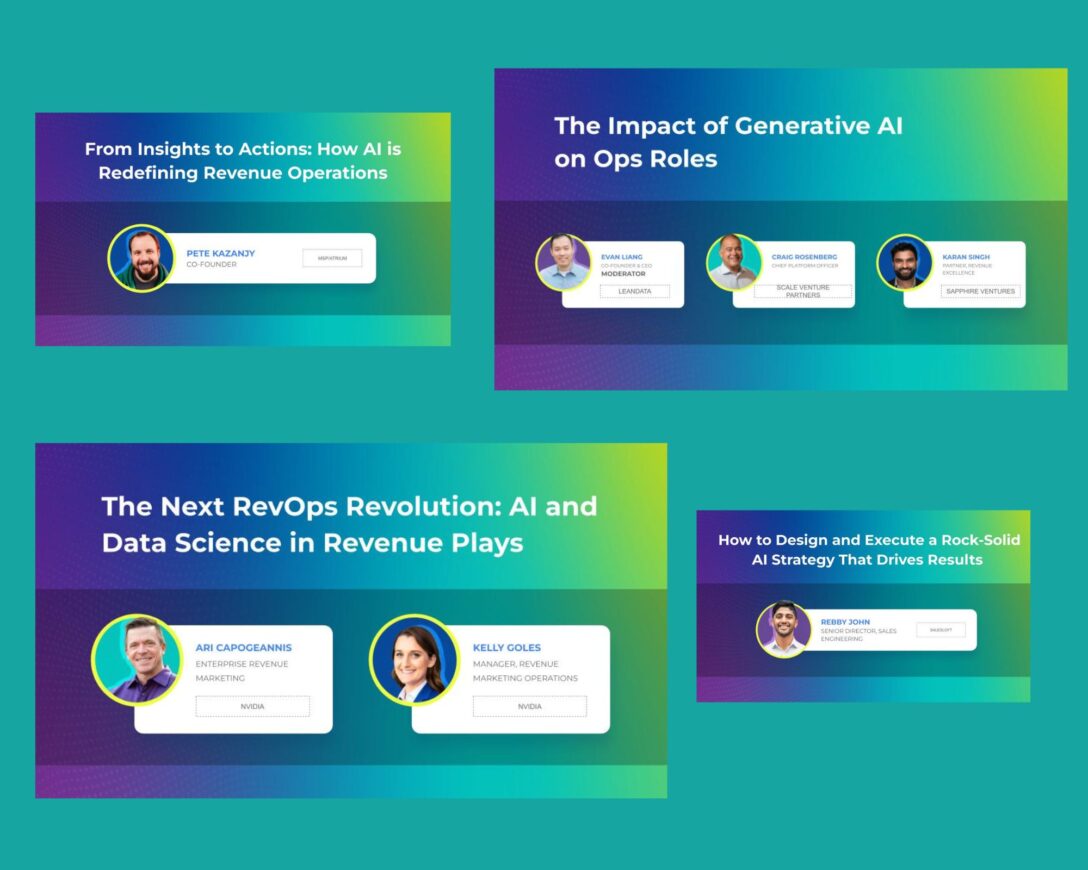
#3 Navigating the AI Scene in Operations
“What’s the impact of AI on RevOps? Are robots coming for your jobs?”
In the OpsStars keynote, LeanData CEO Evan Liang candidly posed this question to COO and former RevOps leader, Franco Anzini.
Many sessions at OpsStars focused on the impact of AI on operations roles and implementing AI in operations processes.The general consensus shared by many presenters is that AI will not eliminate jobs. However, AI will likely impact RevOps in three ways:
- AI will help with repetitive, lower value-added tasks by automating and creating efficiencies.
- AI will provide a new set of data points that have the potential to inform ops processes. For example, AI can distill out themes from a set of data points and make recommendations.
- AI will free up time for operations pros to think and strategize on the problems they are trying to solve.
During another AI-focused OpsStars session, Rebby John, Salesloft Senior Director of Sales Engineering, provided several tips for using generative AI to write prospecting emails.
At this stage of development, AI-generated emails need work — a human to look over the content before it’s sent to a customer or prospect. When building prompts, Rebby recommends that the instructions have a clear goal, context, and specified tone.
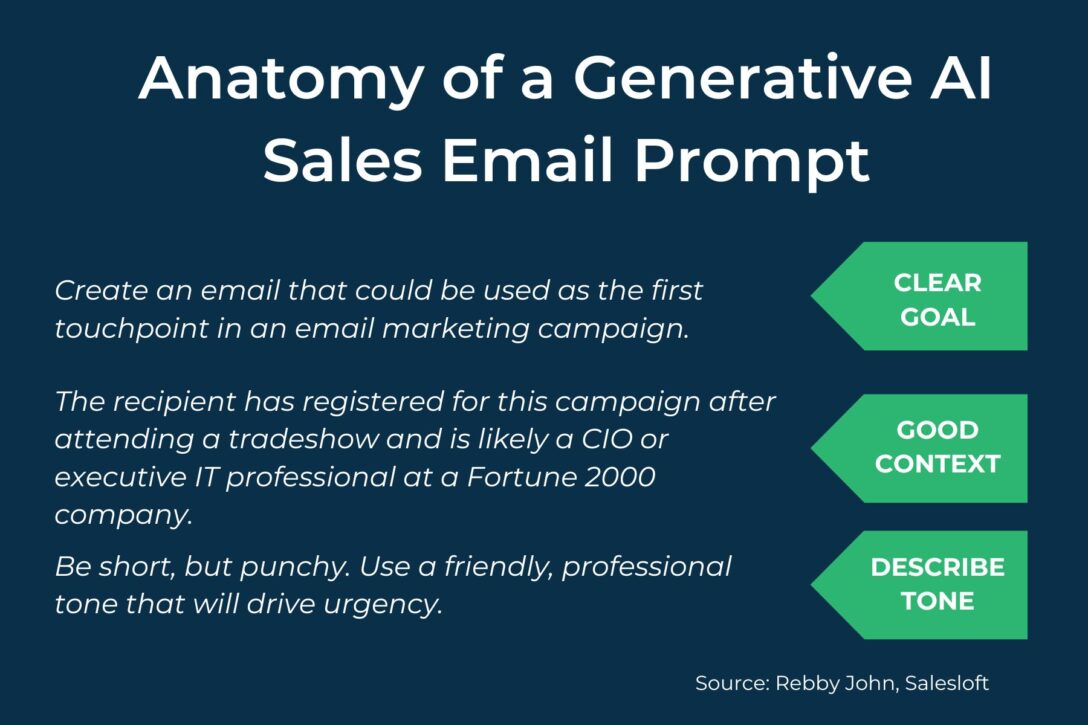
#4 Strategies for RevOps in Challenging Times
Given 2023’s economic downturn, some of the best, practical advice on navigating revenue operations in turbulent times came from an OpsStars panel of three experienced RevOps leaders: LeanData’s Christine Maxey, Cat Torres, and New Relic’s Hanné Venables.
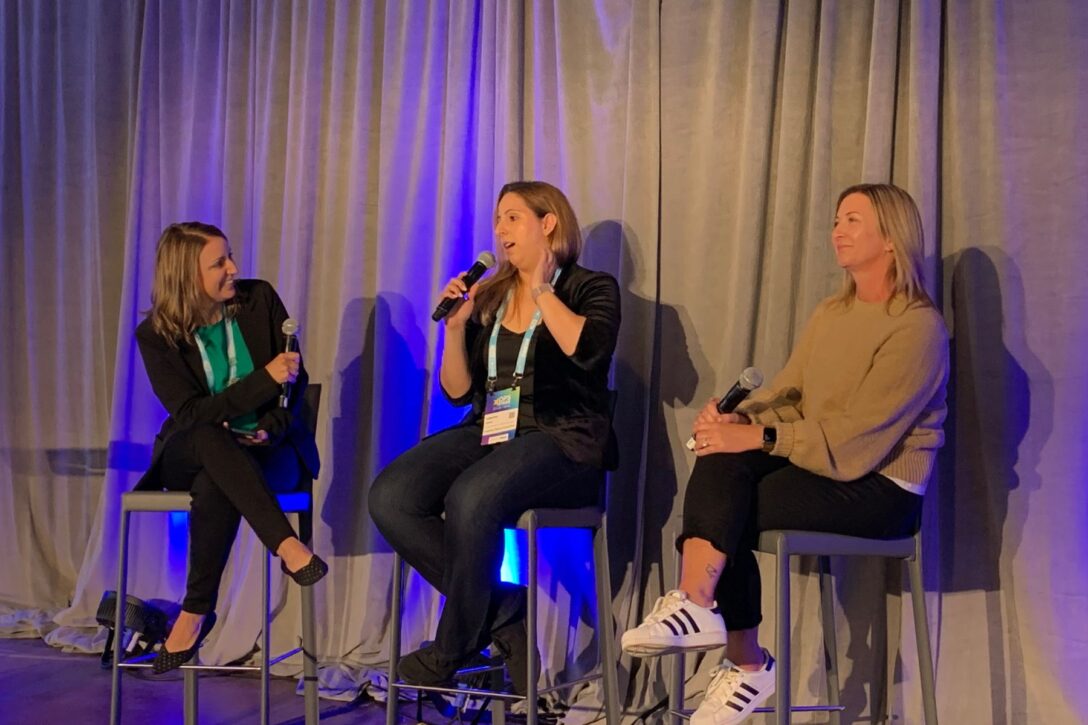
One common theme shared by the panel was the increased amount of time spent evaluating their company’s tech stack. All three RevOps pros were tasked with downsizing applications, consolidating tools, and looking for duplication across the stack. This involved determining which tools were not driving value and cutting them out.
To support this initiative, New Relic created a Tool Governance Board across their organization. Maxey shared her team’s efforts at retiring some tools and purchasing others, working with sales enablement to research viable options, select the best solution, and create implementation plans.
Another common theme was the need for ops pros to expand their skill sets. As organizations decreased employee headcount, several companies unified the SalesOps and MarketingOps departments into one revenue operations team. With less support, ops pros have been forced to become more self-sufficient.
Given this focus on efficiency, smart vendors have also changed the way they engage with their customers, decreasing account check-ins and bringing more value to the vendor-customer relationship. RevOps pros simply do not have the time for a quarterly social call with all of their vendors.
All three panelists mentioned they were paying more attention to newer, smaller vendors who could provide less expensive solutions.
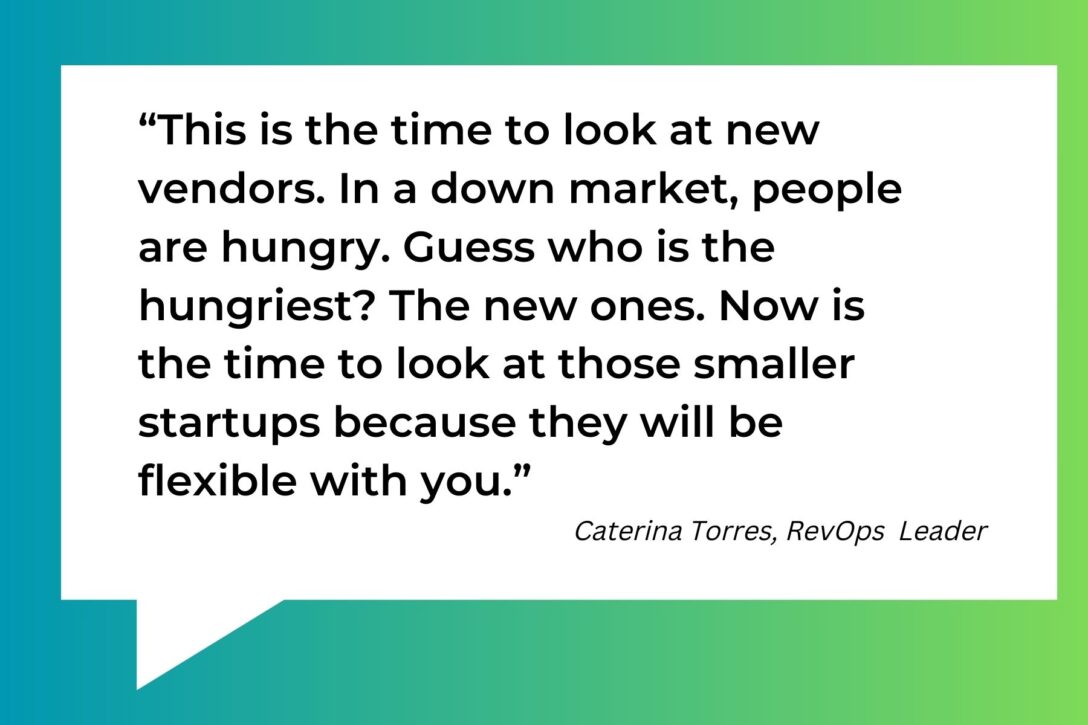
#5 Building a Career in RevOps and Beyond
OpsStars sessions were full of career advice, from entry-level ops practitioners to seasoned RevOps leaders who’ve transitioned to the C-suite.
Here are few helpful career tips:
Franco Anzini, COO, LeanData: “If you’re in a RevOps role, you’re supporting different parts of the organization. There are a lot of things that are not familiar. You need to be okay with that. The redeeming quality about all ops people is we’re problem solvers by nature. We’ll jump into unfamiliar territory and figure it out.”
Karan Singh, Partner, Revenue Excellence, Sapphire Ventures: “There’s a lot of exceptional talent out there. A lot of people have the right skills, but do you have the competencies on the other side? Do you have executive presence? Do you know how to control a board room? To stand out you need to do these other things.”
Jake Randall, COO, Common Room: “Mentorship was very helpful in my journey. Having someone say, ‘You’re here. What do you actually want to do?’ Mentors help you determine where you want to go and open doors for you.”
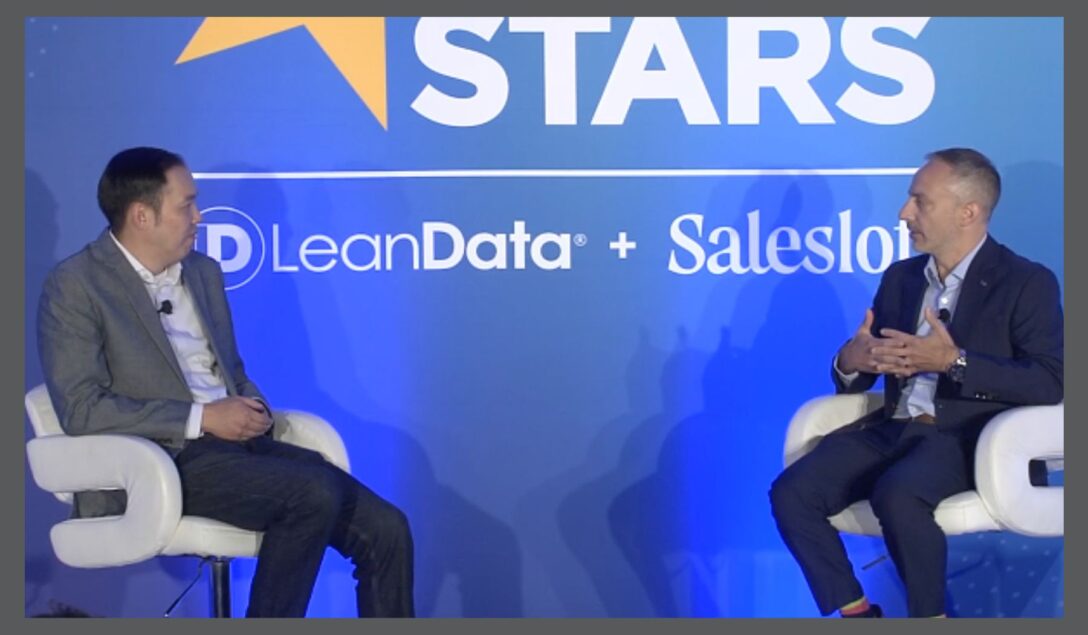
Revenue Operations Predictions for 2024
While Salesforce will continue to launch new AI-infused features to their platform in 2024, what will the next 12 months look like for operations professionals?
As shared by many pros at OpsStars, the revenue operations role will continue to evolve. When operations roles started, ops pros were generally supporting sales. That’s where the money changed hands. As marketing budgets increased, ops pros began to support marketing efforts.
In 2024, this support is projected to expand into the customer success realm where ops pros will manage revenue protection activities like renewals and upsells. These processes need to be operationalized and aided with technology.
Until the next Dreamforce and OpsStars, be curious. Don’t be afraid to jump in and learn things on the go. Taking initiative always pays dividends.








